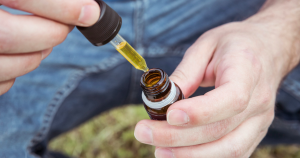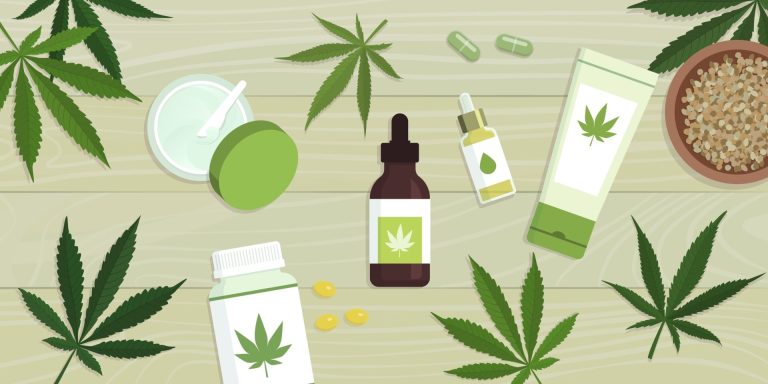The landscape of platforms for CBD advertising continues to shift as regulations tighten and loosen in different regions. In 2025, choosing the right traffic sources isn’t just about reach—it’s about compliance, strategy, and sustainability.
Despite increasing consumer demand, many CBD advertising platforms still heavily restrict CBD-related content, making it harder for brands to scale ad campaigns. This guide breaks down where and how CBD brands can effectively advertise while minimizing risk.

Understanding the Current CBD Advertising Environment
The global CBD industry shows no signs of slowing down. But as it grows, so do the challenges related to advertising. While consumer interest is high, platforms for CBD advertising still place CBD in the “high-risk” category, especially when it comes to ingestibles or medical claims.
The key to success lies in identifying compliant advertising channels, aligning with their specific ad policies, and focusing on educational, non-transactional content. Let’s explore the top platforms for CBD advertising in 2025 and how to approach each one effectively.
Paid Media Channels You Can Actually Use
Google Ads: Still Limited, but Not Impossible
Google remains one of the most powerful digital ad platforms, but their policies around CBD are strict and region-dependent. Currently, only topical CBD products and hemp-derived items with legal THC limits are eligible for promotion—primarily in the U.S. and a few select countries.
To navigate these restrictions, brands can focus on content-based strategies. For example, drive traffic to blog posts or educational landing pages instead of direct product listings. Avoiding medical language and health claims is crucial.
For compliant brands, Google offers whitelisting options, but this typically involves submitting documentation such as third-party lab results, licenses, and certifications. While it’s not a scalable method for everyone, it’s worth exploring if you’re targeting regulated markets.

Meta (Facebook & Instagram): Great for Education, Tough for Direct Sales
Meta continues to be a challenging space for CBD marketers. Ads promoting CBD oils, edibles, or anything ingestible are usually disapproved unless they’re disguised under vague branding. That said, educational content, lifestyle posts, and hemp-based skincare can still get through.
A safer route is to create educational funnels: use Meta ads to drive users to blogs, whitepapers, or videos—then remarket to that warm audience through email or SMS.
Influencer partnerships also offer an alternative angle. Creators in wellness and lifestyle niches can organically discuss your brand, reaching your target audience without triggering Meta’s compliance filters.
TikTok Ads: Engage, Don’t Sell
TikTok is notoriously strict with anything CBD-related, but it offers one of the highest engagement rates among younger audiences. What’s working in 2025 is community-led storytelling.
Brands use short-form video to highlight educational points, user experiences (without medical claims), and product use in real-world scenarios. Direct product advertising isn’t allowed, but authentic, brand-aligned content can drive awareness and grow a loyal following.
Twitter (X): Surprisingly CBD-Friendly
Unlike other major platforms, Twitter (now X) is relatively welcoming to CBD advertising—especially in regions like the U.S., Canada, and the UK. It’s currently one of the few major platforms where ingestible CBD products can be promoted, as long as the ad copy complies with their guidelines.
That means:
-
No medical claims
-
Clear disclaimers
-
Legal documentation on file
If you’re seeking paid reach at scale, this is one of the top platforms for CBD advertising today. Pairing paid campaigns with organic community interaction increases trust and performance.
Alternative Networks You Shouldn’t Overlook
Native Advertising: Scalable, Compliant, and High-Performing
One of the smartest ways to bypass mainstream restrictions is through native advertising on platforms like Taboola, Outbrain, or MGID. These networks allow branded content to appear on high-traffic sites in a way that feels more like editorial than advertising.
The key here is subtlety. Instead of pushing sales, focus on informative headlines like “What You Need to Know About CBD for Sleep” and link them to soft-sell landing pages.
Native ads also perform well with retargeting campaigns—driving high-converting traffic from audiences who have already engaged with your brand on organic platforms.
Programmatic & Display Ads: High Risk, High Reward
Programmatic platforms can serve ads across a wide variety of sites, but not all networks accept CBD campaigns. The ones that do often require whitelisting and strict compliance with creative guidelines.
When executed well, display ads provide large-scale visibility and solid ROI. Contextual targeting helps CBD brands appear alongside relevant content like wellness, alternative medicine, or stress relief. It’s not plug-and-play, but with the right setup, it’s one of the more scalable options in 2025.
Regional Restrictions Still Matter
Even the most CBD-friendly platforms enforce geo-based restrictions. What’s allowed in California may be banned in Texas. And the UK has different rules than Germany. Always align your ad targeting with your compliance strategy to avoid unnecessary disapprovals or bans.
Working with legal counsel or compliance consultants can streamline your approval process—especially when entering new markets. Keep documentation ready, including COAs (Certificates of Analysis), product labels, and ingredient breakdowns.
Common Mistakes to Avoid in 2025
Despite the growth in platform options, many brands still make avoidable mistakes. One of the most common is attempting to “mask” CBD products under vague branding—like promoting a “relaxation product” that clearly links to a CBD store. Most ad reviewers see right through this and will flag the account.
Another mistake is focusing only on short-term paid campaigns without investing in organic channels like SEO, email marketing, and educational funnels. These help build long-term brand equity and reduce dependency on any single platform.

Final Thoughts
While there’s no perfect platform, there are more viable platforms for CBD advertising in 2025 than ever before. Brands that succeed are those who take compliance seriously, focus on value-first marketing, and diversify their traffic sources.
Whether you’re leveraging TikTok for engagement, Meta for awareness, or Twitter for direct conversions, always pair your campaigns with a smart content strategy. Adaptability is key in this space. Keep testing, stay compliant, and build for the long term.
Check out our other blogs about promoting CBD brands and industry insights.



